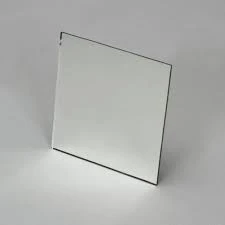

The Allure of Satin Pattern Glass A Journey Through Design and Functionality
Satin pattern glass, a unique and aesthetically pleasing material, has gained considerable attention in the world of interior design and architectural glasswork. Combining beauty with functionality, satin pattern glass offers an enchanting blend of softness and sophistication, making it a favored choice among architects, designers, and homeowners alike.
At its core, satin pattern glass is characterized by its distinctive finish, which scatters light and conveys an ethereal glow. Unlike traditional clear glass, satin pattern glass features a matte surface that diffuses light, ensuring that it is not only visually appealing but also lends privacy to spaces. This makes it an ideal choice for applications such as bathroom windows, shower doors, and office partitions where both light and seclusion are necessary.
Historically, the use of patterned glass can be traced back to ancient civilizations, but it was during the Art Deco movement in the early 20th century that satin pattern glass truly flourished. Designers and artisans began to experiment with various textures and patterns, leading to the emergence of intricate designs that enhanced the elegance of this material. The unique tactile qualities of satin glass made it a popular choice for light fixtures, doors, and decorative elements in stylish homes.
One of the most enchanting aspects of satin pattern glass is its versatility. Available in a plethora of designs, from geometric patterns to organic motifs, this glass can be tailored to complement any aesthetic. Whether one is aiming for a contemporary look with clean lines or a more traditional feel with ornate details, satin pattern glass can harmoniously fit into the vision. Additionally, it can be treated to adapt to different colors, allowing designers to create cohesive palettes that enrich the overall atmosphere of a space.

In modern architecture, satin pattern glass is often favored for its safety features. When utilized in toughened or laminated forms, it becomes structurally sound, which is vital for larger installations like facades or glass walls. Moreover, its ability to diffuse light helps in reducing glare, contributing to energy efficiency by minimizing the reliance on artificial lighting during the day. This not only enhances the ecological footprint of the building but also creates a more comfortable living or working environment for its occupants.
Furthermore, the maintenance of satin pattern glass is relatively straightforward. Its non-reflective surface minimizes fingerprints and smudges, making it an ideal choice for high-traffic areas. Regular cleaning with mild soap and water is typically sufficient to maintain its pristine look, thus ensuring it remains a lasting investment.
Beyond functional applications, satin pattern glass has also found its place in artistic and decorative endeavors. Artists have begun to embrace this medium for its expressive potential. From custom glass panels to intricate installations, satin pattern glass can be utilized in artworks that captivate the viewer's attention and provoke thought.
In conclusion, satin pattern glass embodies a perfect fusion of aesthetic appeal and practical functionality. Its soft texture and light-diffusing qualities enable it to enrich a multitude of spaces, from luxurious homes to contemporary office buildings. With its rich history, versatility, and artistic potential, satin pattern glass continues to be a beloved choice for those seeking to enhance their environments with elegance and style. As we move forward into an era where design plays an integral role in our daily lives, satin pattern glass will undoubtedly remain a timeless element in the world of architecture and design.